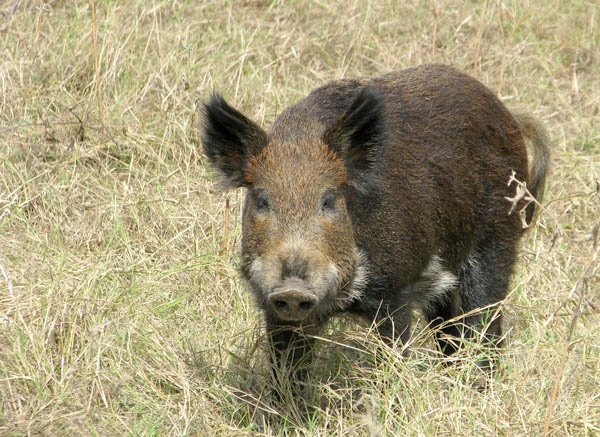June 19, 2013

Feral swine are an invasive species well known for their ability to degrade native habitats, damage agricultural interests, and spread disease. However, until now, little was known about their impacts to archaeological sites.
USDA-APHIS scientists at the National Wildlife Research Center (NWRC) and colleagues from the Avon Park Air Force Range (Avon Park) recently measured the potential for feral swine to disturb and destroy archaeological sites in south-central Florida. The study was conducted at Avon Park, a base comprising more than 98,000 acres and containing hundreds of archaeological sites.
Though people first inhabited Florida more than 12,000 years ago, the first written records about life there began with the arrival of the Spanish explorer Juan Ponce de León in 1513. Records tell the story of the rich cultures found by Ponce de León, but much archaeological evidence in Florida’s soil is still waiting to be revealed.
Scientists examined potential feral swine impacts to 36 sites at Avon Park that are eligible for registration with the National Register of Historic Places. Of the 36 sites, 20 are prehistoric, eight are historic, and eight have both prehistoric and historic components.
“We found widespread potential for artifacts to be damaged or displaced by feral swine rooting and wallowing activities at these sites,” states NWRC researcher Dr. Richard Engeman. “Seventy-nine percent of the sites had artifacts within 8 inches of the surface making them highly vulnerable to feral swine disturbance. However, even more troubling was that 42 percent of the sites already showed signs of swine damage.”
Soon after the study, a fence was erected around one of the more vulnerable sites. Researchers note this is not a feasible remedy for all locations. A combination of methods, including the lethal removal of feral swine, likely will benefit archaeological site preservation the most by reducing (but not eliminating) disturbance. The study’s findings shed light on feral swine damage to archaeological resources and aids managers in their efforts to protect these unique resources.
The NWRC is the research arm of the Wildlife Services (WS) program. WS experts collaborate with State, local and tribal officials to reduce the threats caused by feral swine to our country’s livestock, agriculture, native ecosystems, and human and animal health. You can help be part of the solution: 1) Report feral swine activity to the proper wildlife and agriculture officials in your State; 2) Do not relocate feral swine without proper permits; and 3) if you raise domestic pigs, take adequate biosecurity measures to prevent accidental release of domestic pigs or the interaction between feral swine and domestic pigs.
More from Western Farm Press
Wine grape drone flying over California vineyards
Days of wine auctions and gay marriage
Agriculture's burden of technological intolerance
Drip-tape salvation for California farmers?
You May Also Like




